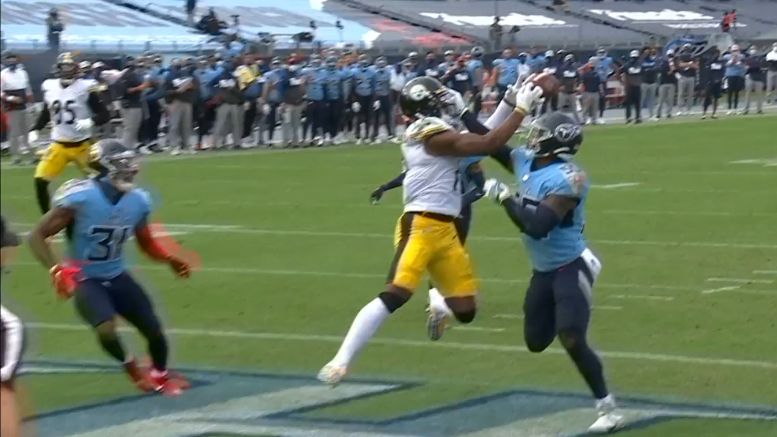The offseason is inevitably a period of projection and speculation, which makes it the ideal time to ponder the hypotheticals that the Pittsburgh Steelers will face over the course of the next year, whether it is addressing free agency, the draft, performance on the field, or some more ephemeral topic.
That is what I will look to address in our Buy or Sell series. In each installment, I will introduce a topic statement and weigh some of the arguments for either buying it (meaning that you agree with it or expect it to be true) or selling it (meaning you disagree with it or expect it to be false).
The range of topics will be intentionally wide, from the general to the specific, from the immediate to that in the far future. And as we all tend to have an opinion on just about everything, I invite you to share your own each morning on the topic statement of the day.
Topic Statement: JuJu Smith-Schuster’s knee was an issue that negatively affected his play and usage last season.
Explanation: Smith-Schuster originally suffered a knee injury in the second half of the 2019 season. It caused him to miss four games, and he clearly continued to feel the effects for the final two for which he returned. He was on the injury report last season often for knee issues, and Jeremy Fowler recently indicated for ESPN that some teams were concerned about his long-term durability as he hit the open market this month.
Buy:
aDOT doesn’t lie. Even when taking everything else into consideration, it’s very hard to justify the case that Smith-Schuster was fully health with the bald reality that his average depth of target was just 5.5 yards beyond the line of scrimmage. In comparison, Ben Roethlisberger’s average intended air yards per throw was 6.9, meaning that his average pass traveled a yard and a half further than Smith-Schuster’s average target. That might not sound like a lot, but it adds up.
In fact, we can retrofit this a bit, though not to an exact number. Let’s say 5.5 is right on the money. Ben Roethlisberger targeted him 120 times, averaging 6.4 yards per attempt. At 120 attempts, that’s 660 intended air yards.
Roethlisberger threw 4220 intended air yards in total last season on 608 attempts, so if you remove Smith-Schuster’s numbers, that’s 488 pass attempts for 3560 intended air yards, which is an average of…7.3 yards per attempt.
Almost two yards per attempt through the air more than his average target to Smith-Schuster. You don’t run a tight end route tree for a wide receiver who has a history of explosive plays if he’s 100 percent.
Sell:
Or, you do when your beleaguered old quarterback with a reconstructed elbow is trying to get passes out of his hand in under two seconds and Smith-Schuster is your old reliable. We don’t have these numbers, but I’m betting that his time to throw is lower for Smith-Schuster than for any other target.
And the bottom line is he played every game. The Steelers had Chase Claypool and James Washington running post routes. His assignments became more niche not because he had a gimpy knee and couldn’t run under the go ball, but because it was in the best interests of the offense and of the team for him to play that role—at the expense of his open market value.








